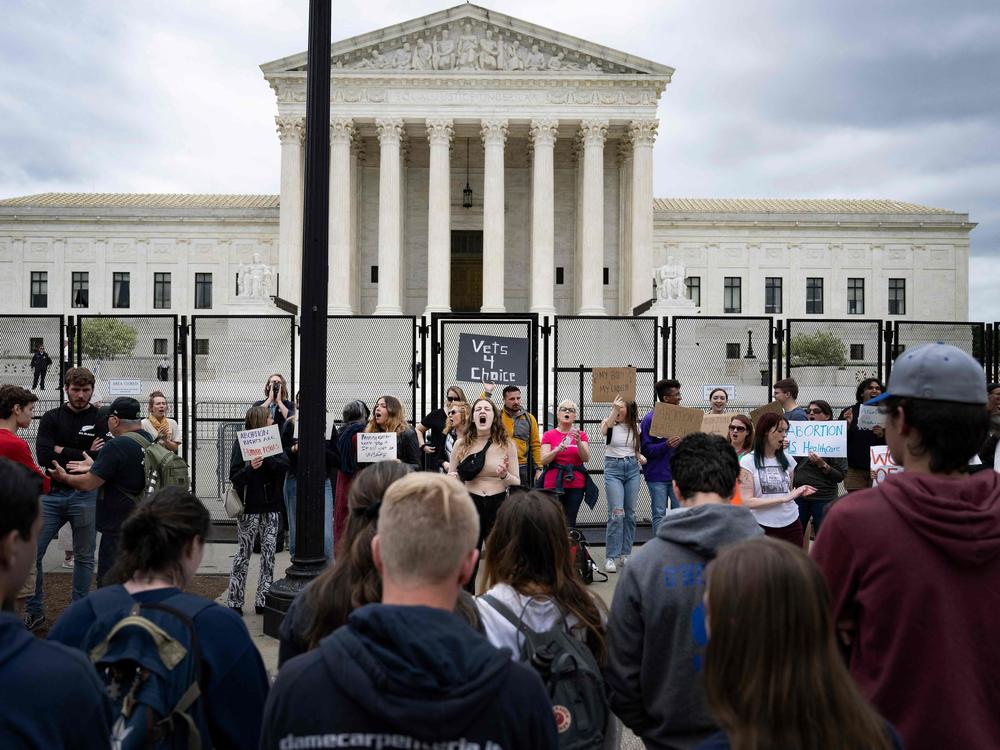Loading...
Section Branding
Header Content
7 persistent claims about abortion, fact-checked
Primary Content
Since the Supreme Court's 1973 Roe v. Wade decision ruled that women have a constitutional right to end their pregnancies, proponents and opponents of abortion rights have worked to own the conversation over the issue.
In 2019, the Centers for Disease Control and Prevention reported that 629,898 legal induced abortions were reported across the United States.
Lingering claims circulate about abortion, including about the safety of it, who gets abortions and even who supports or opposes access to abortion.
Below, seven popular claims surrounding abortion get fact-checked.
According to the Pew Research Center's polls, 37% of Americans want abortion illegal in all or most cases.
But an even bigger fraction — around 6 in 10 Americans — think abortion should be legal in all or most cases.
Current abortion rates are lower than what they were in 1973 and are now less than half what they were at their peak in the early 1980s, according to the Guttmacher Institute, a reproductive health research organization that supports abortion rights.
In 2017, pregnancy rates for females age 24 or below hit their lowest recorded levels, reflecting a long-term decline in pregnancy rates among females 24 or below.
Overall, in 2017, pregnancy rates for females of reproductive age hit their lowest recorded levels, with 87 pregnancies per 1,000 females ages 15 to 44, according to the Guttmacher Institute.
The annual number of deaths related to legal induced abortion has fluctuated from year to year since 1973, according to the CDC.
An analysis of data from 2013 to 2018 showed the national case-fatality rate for legal induced abortion was 0.41 deaths per 100,000 legal induced abortions, lower than in the previous five years.
The World Health Organization said people obtaining unsafe abortions are at a higher risk of death. Annually, 4.7% to 13.2% "of maternal deaths can be attributed to unsafe abortion," the WHO said. In developing regions of the world, there are 220 deaths per 100,000 unsafe abortions.
Trans and nonbinary people have undergone abortions as well.
The Guttmacher Institute estimates in 2017, an estimated 462 to 530 transgender or nonbinary individuals in the U.S. had abortions. That same year, the CDC said, 609,095 total abortions were carried out in the country.
The Abortion Out Loud campaign has collected stories from thousands of people who have had an abortion. Included are stories from trans and nonbinary people who have had an abortion — such as Jae, who spoke their experience.
"Most abortions in 2019 took place early in gestation," according to the CDC. Nearly 93% of abortions were performed at less than 13 weeks' gestation.
Abortion pills, which can typically be used up to 10 weeks into a pregnancy, made up 54% of abortions in 2020. These pills were the primary choice in the U.S. for the first time since the Food and Drug Administration approved the abortion drug mifepristone more than 20 years ago.
State legislatures have been moving to adopt 20-week abortion bans, with abortion opponents claiming fetuses can feel pain at that point. Roughly a third of states have implemented an abortion ban around 20 weeks.
But this contradicts widely accepted medical research from 2005. This study, published in the Journal of the American Medical Association, concluded that a fetus is not capable of experiencing pain until somewhere between 29 or 30 weeks.
Researchers wrote that fetal awareness of pain requires "functional thalamocortical connections." Those thalamocortical fibers begin appearing between 23 and 30 weeks' gestational age, but the capacity for pain perception comes later.
The argument against abortion has frequently been based on religion.
Data shows that the majority of people who get an abortion have some sort of religious affiliation, according to the most recent Guttmacher Institute data, from 2014.
The Pew Research Center also shows that attitudes on whether abortion should be legal vary among evangelical Protestants, mainline Protestants and Catholics.
Copyright 2022 NPR. To see more, visit https://www.npr.org.
Bottom Content

